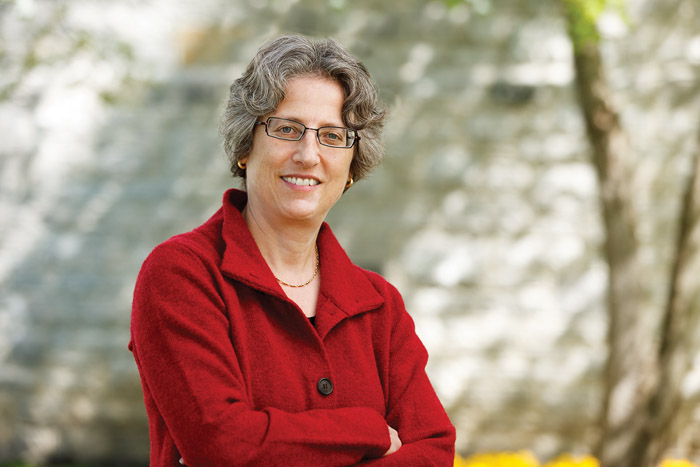Pillars of Identity

by Nancy Roseman, president
So many things today seem to be about image and perception. Hundreds of billions of dollars are spent on sculpting our perceptions and opinions of people and institutions. We know people in the public eye do this, and we watch the now familiar trajectory from fame to shame, to scripted apology, to redemption—carefully managed by public-relations experts. Corporations influence how we feel about them, working to convince us that their product is worth our hard-earned dollars or that they embrace a philosophy that resonates with us, thereby winning us as customers.
I suspect that most probably don’t think about the fact that institutions of higher learning also work to cultivate their image, and some may even find the notion that Dickinson has a foot in the marketing business a bit distasteful.
I fully sympathize with that reaction. I distinctly remember early in my time as an academic-turned-administrator being dumbfounded in a meeting the first time we discussed our “brand.” I admit I was outraged that we were spending time on something that seemed inappropriate, but I quickly came to realize and appreciate the difference between commercial branding in an effort to sell a product, and the importance of authentically and honestly communicating who and what you are, as a community and as an institution.
Identity, or self-definition, is something that every organization must ascribe to itself. The identity of an academic institution matters for many reasons. It provides language and images that help us know immediately the place to which we are referring. It helps us feel something communal and creates a common frame of reference, one we can share or even just assume. Knowing your identity also helps you to stay true to it and builds a sense of community among a body of alumni that spans decades. Dickinsonians from the ’50s feel connected to those who will walk down the steps of Old West in May.
Identity also matters in the marketplace as prospective students and their parents try to determine whether Dickinson is the place for them. It matters in terms of our larger sphere of relationships among colleagues, friends and family, as their perception of an individual is shaped because of the identity of the college they attended. Sometimes this is sheer snobbery; sometimes this is related to our allegiance to our own alma mater. Passions can run deep here!
At Dickinson, knowing that there are many liberal-arts colleges to choose from, we consciously have emphasized specific priorities that sculpt our identity. For example, our focus on global education, sustainability and a cross-disciplinary approach is critical to how we see ourselves and how Dickinson is perceived by the outside world. These aspects of our curriculum are now as deeply woven into our fabric as any campus tradition could be, yet they are relatively recent constructs, given our beginnings more than 200 years ago.
Perhaps it is best to turn the focus of identity on our graduates and ask, what does it mean to be a Dickinsonian? No matter what aspect of Dickinson drew you here—be it sustainability, global education, our size, our location, the quality of our faculty, the energy you felt during your visit or the beauty of our campus—ultimately we made our mark on you. As a member of our community, you are a broad thinker and capable of stretching yourself. You are adventurous, engaged and concerned about the world around you.
As the world changes around us, our priorities will necessarily shift in both subtle and dramatic ways. What is our next pillar? No matter what we add to the mix, we must stay true to our values so that they permeate our decision-making, pointing the way as our priorities evolve. Staying true to who we are will allow us to continue to produce graduates we are proud to claim as members of our community. The most precious facet of our identity, of our image, is, in fact, the graduates we produce.
Read more from the spring 2014 issue of Dickinson Magazine.
Published April 22, 2014